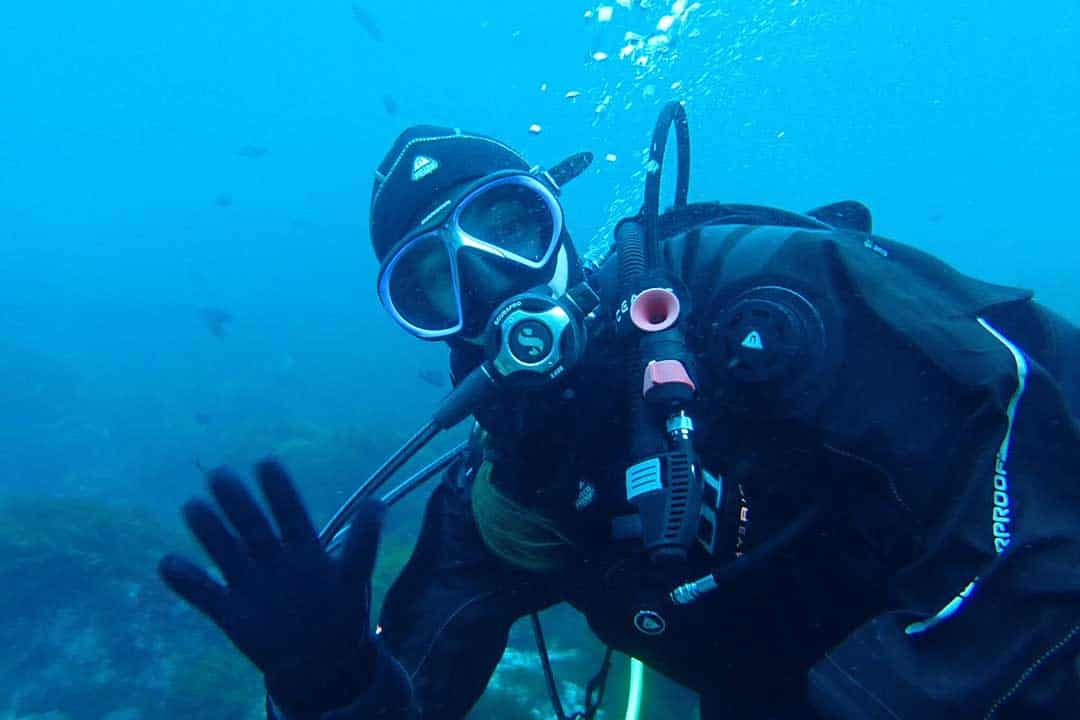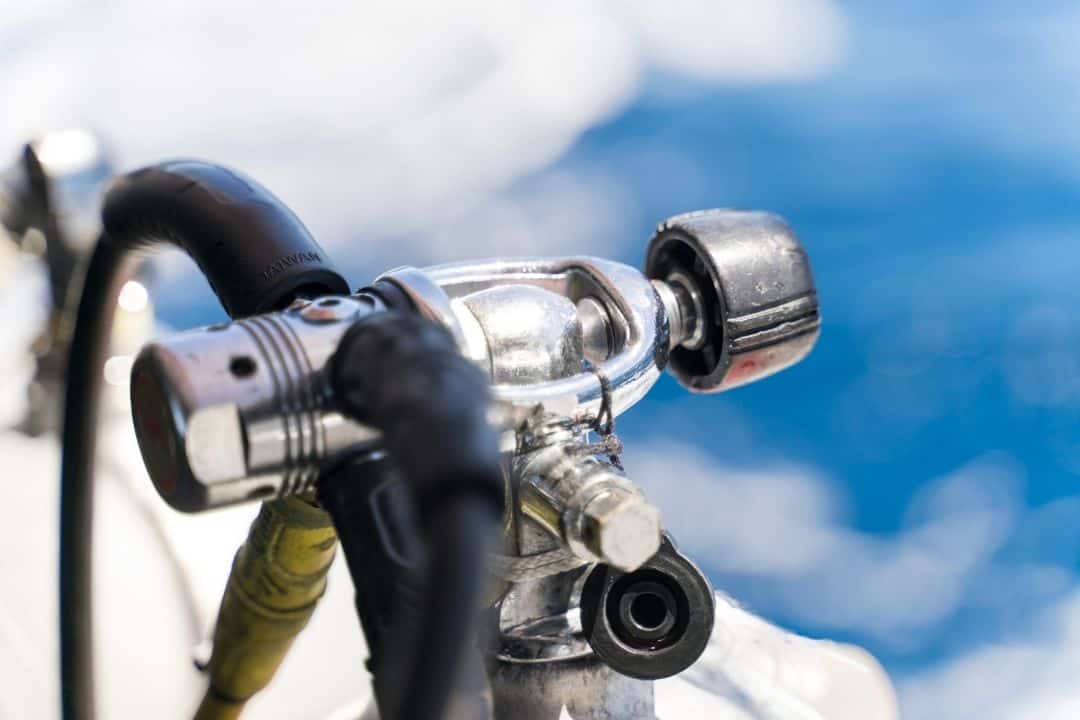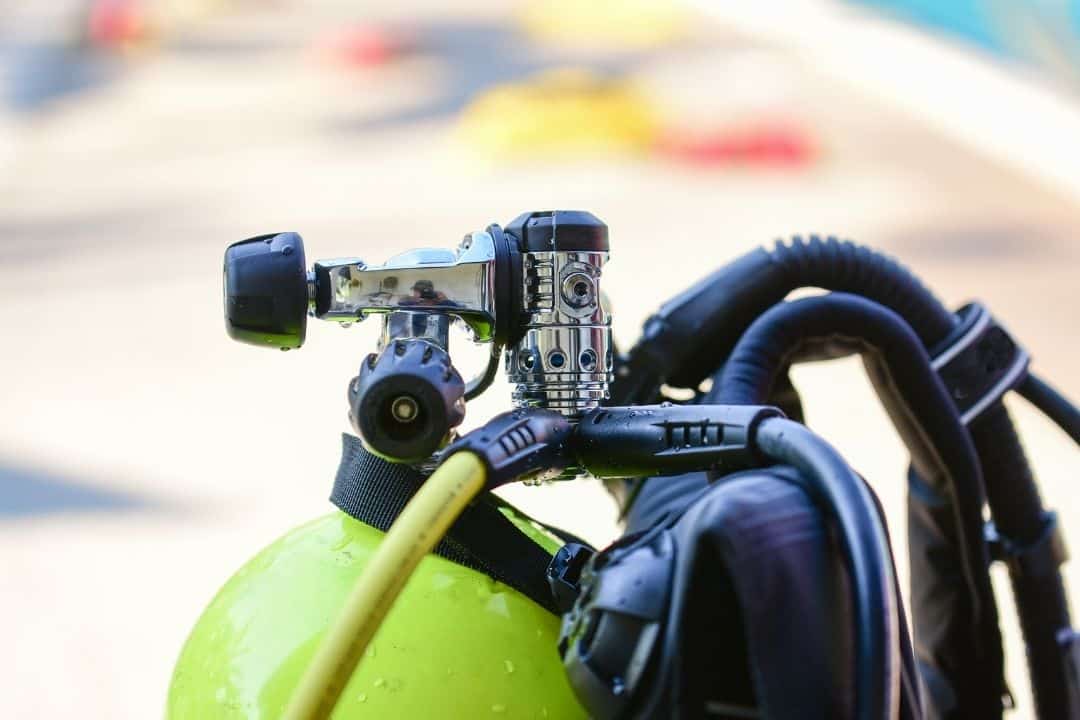You’ve passed your open water course, and are obsessed with diving and ready to commit fully — that means you’re ready to buy a dive computer and a regulator system!
These two gear items are the most important to invest in first because they literally keep you alive during your dive.
In other words, safety items are the best first investment (and comfort items are a close second).
Buying a great regulator, in particular, can so greatly improve your dive experience, that it is very important to choose the right regulator for your dive needs.
How much does a diving regulator cost?
A regulator can range anywhere from 400 to 3000 USD, for a variety of reasons. The materials used, the brand, the useful features like swivels or extra ports — all of these differences can affect regulator price.
When you compound that with choosing the right octopus and gauge to add to your regulator system, it is easy to see how the price of a regulator can vary so much.
Let’s discuss in detail the things that can affect the pricing of a regulator:
Materials

A variety of different materials are used to build both the inner workings and the outer casings of a regulator first and second stage.
Generally, the ratio of plastics to metals, as well as the types of metals used, will greatly affect the price of the regulator.
A greater use of plastics will put a regulator on the lower end of the price range, with the price steadily increasing as more chrome-plated brass, stainless steel, anti-corrosive metal coatings, and titanium are used.
The price increases with the increased use of these more durable and corrosion-resistant metals, with a fully titanium regulator capping the high end of the price range (although there are of course some parts that are still made from plastic and other metals, the majority of the metal parts are titanium).
Speaking generally, the first stages of a regulator are almost fully metal with a small ratio of plastic parts internally, while the second stage of a regulator is a higher ratio of plastic than metal.
When the first stage is made from a cheaper metal, it is less expensive to purchase, but requires more consistent upkeep and service to ensure a properly functioning regulator.
Similarly, when a second stage is made of mostly plastic, it will be on the lower end of the price range, but require gentler use, as the material is less durable over time.
On the other hand, when a first stage is made of higher quality metal and a second stage has more metal components and reinforcements, the regulator overall becomes more durable and resistant to corrosion — which means it requires servicing less often and can handle harder use, but it comes at a higher initial price.
Entry Level vs Top of the line Regulator Prices
Entry level
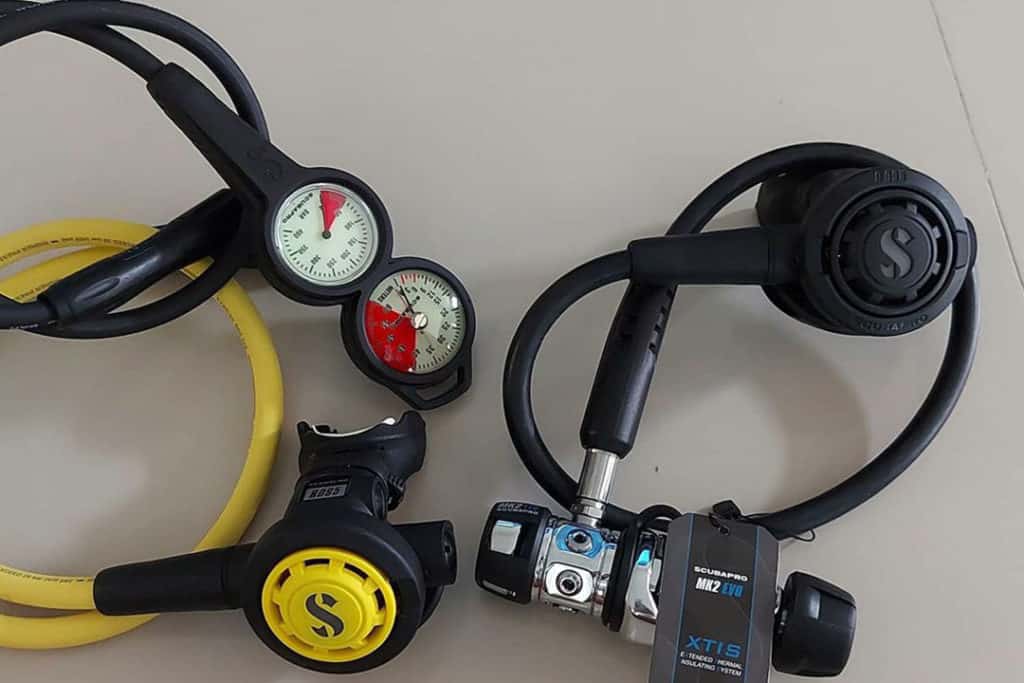
For instance, a ScubaPro MK 2 first stage with an R195 second stage is lower in price (about 460 USD), because the second stage is made fully from plastic (although it is technopolymer plastic, so it is built to withstand thermal changes and pressures — it is safe!), and the first stage is a lower-end metal (chrome-plated brass).
Mid-range
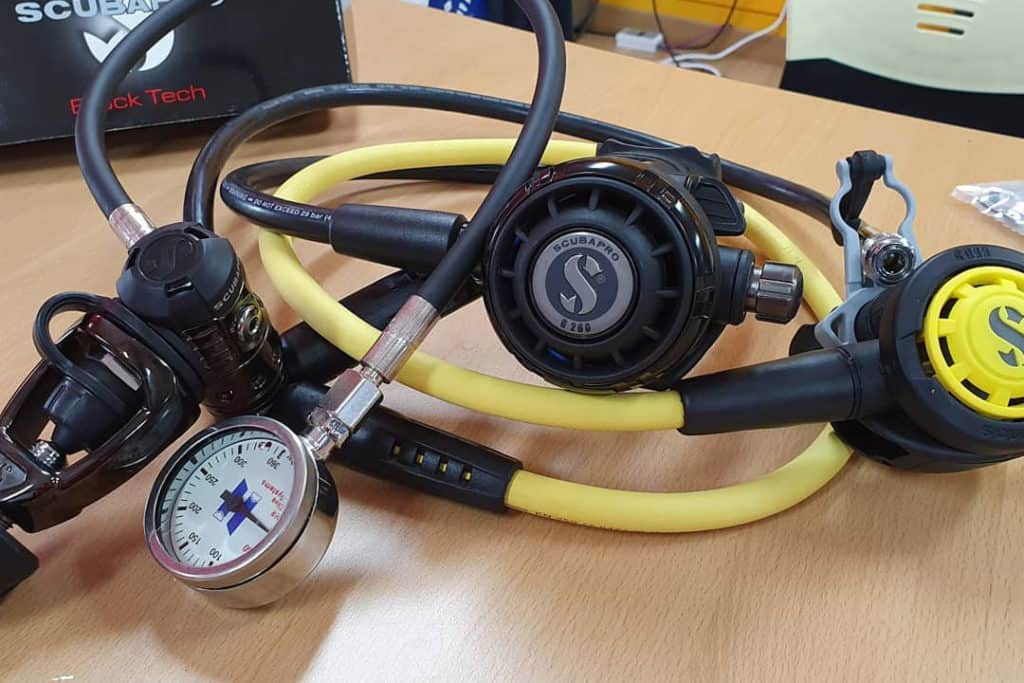
A few steps up in price can get you a second stage reinforced with metal, like the ScubaPro G260 second stage, offering more durability if you’re diving in environments that might result in more wear and tear on your gear.
High-end regulators

On the high end of the spectrum, regulators like an Atomic T3 or a the ScubaPro MK25T EVO/S620 X-Ti above are fully titanium in the first stage, with a large portion of titanium components in the second stage, as well.
This anti-corrosive metal makes the regulator extremely lightweight, durable, and resistant against the corrosion that necessitates frequent servicing, making the regulator worth the high price tag of 1800-2300 USD when a diver is ready to spend it.
The majority of scuba regulator manufacturers offer a titanium regulator (or an anti-corrosive metal coated regulator like the Apeks Tungsten), as well as regulator models at each price point containing a variety of metals.
Added Features
In combination with the materials used, a regulator can become more expensive when convenience/comfort features are added.
While these features generally do not affect the overall function of the regulator as a breathing apparatus, they certainly improve the user experience with the regulator, and therefore its value.
Pressure ports

The number of pressure ports are a great example of one of these features — many mid-price first stages come with 2 high pressure ports and 4 low pressure ports, but cheaper first stages may only have 1 high pressure port, or pricier first stages may come with an additional low pressure port.
Swivels
One of the best additional features regulators can have are swivels. Swivels make every diver’s life easier!
A regulator can have a swivel in a couple places that improve the movement of the diver’s regulator during the dive to increase diver comfort.
On the first stage, a swivel allows for the portion of the regulator containing low pressure hose ports to move freely so that the hoses are not stuck in the same position once the regulator is attached to the tank.
This decreases the likelihood that a diver will feel tugging from the hoses during a dive, allowing for freer diver movement.
On the second stage, a swivel allows for the diver to turn their head without as much resistance from the low pressure hose attaching it to the first stage.
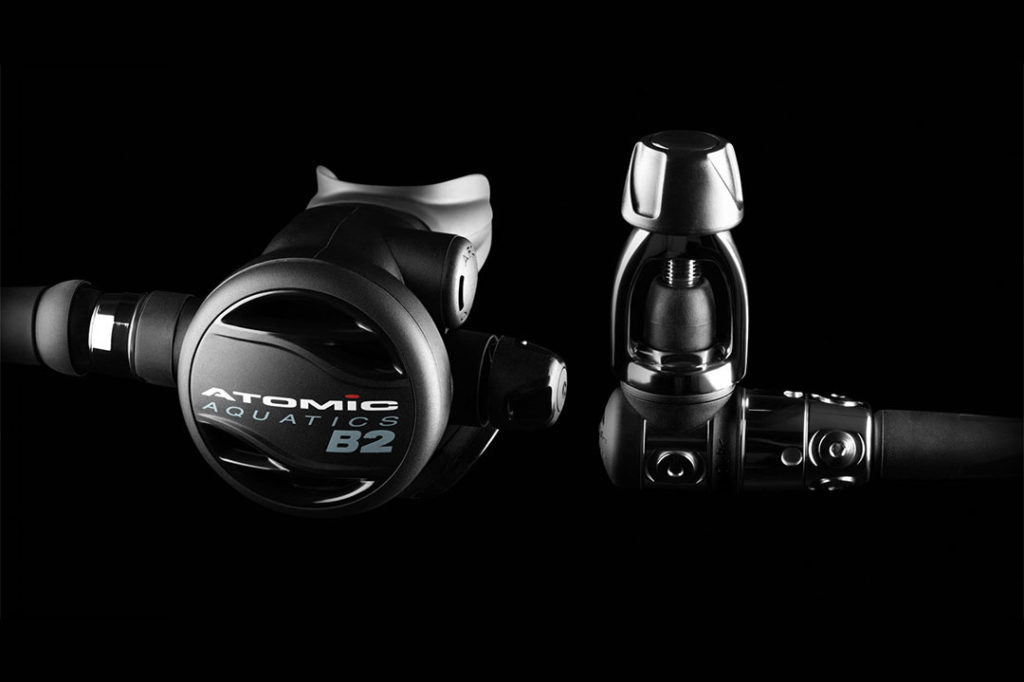
You can see both swivels on this Atomic B2 regulator, which is a great mid-price range because of it’s mixed use of metals and plastics, but is not on the lowest price end because of these great additional features.
Full Regulator Assembly
When considering your regulator purchase, it is definitely worth spending the bulk of your budget on a first and second stage that will last you and be of adequate build for the intended dive environment and length of use.
But be sure to save enough to purchase your octopus and pressure gauge, too — although it is easier to save money buying simpler versions of these gear items depending on your dive needs.
You can always talk to your local dive shop to find the best deals and advice, and don’t forget to leave your comments here with questions or your own recommendations!
